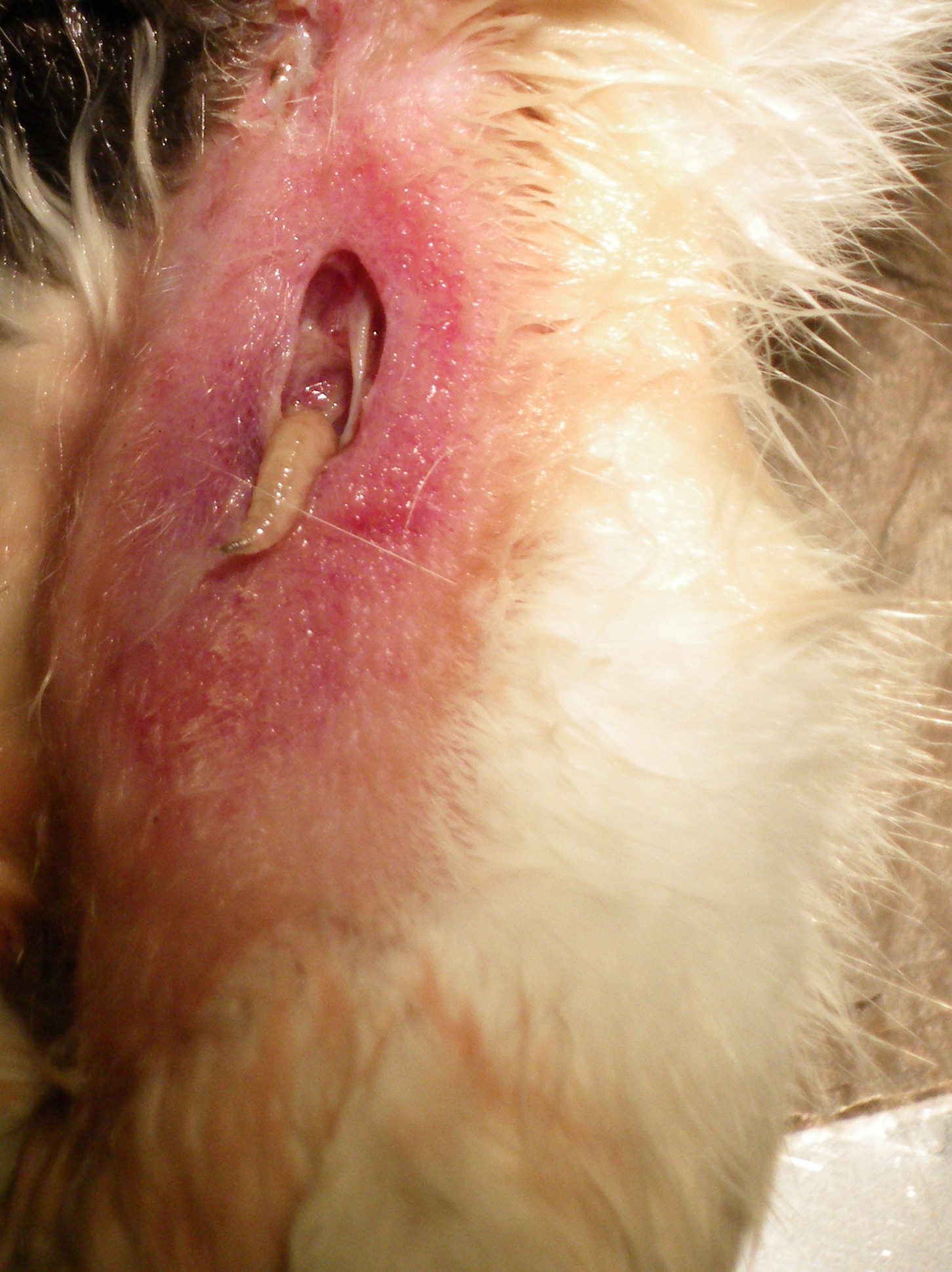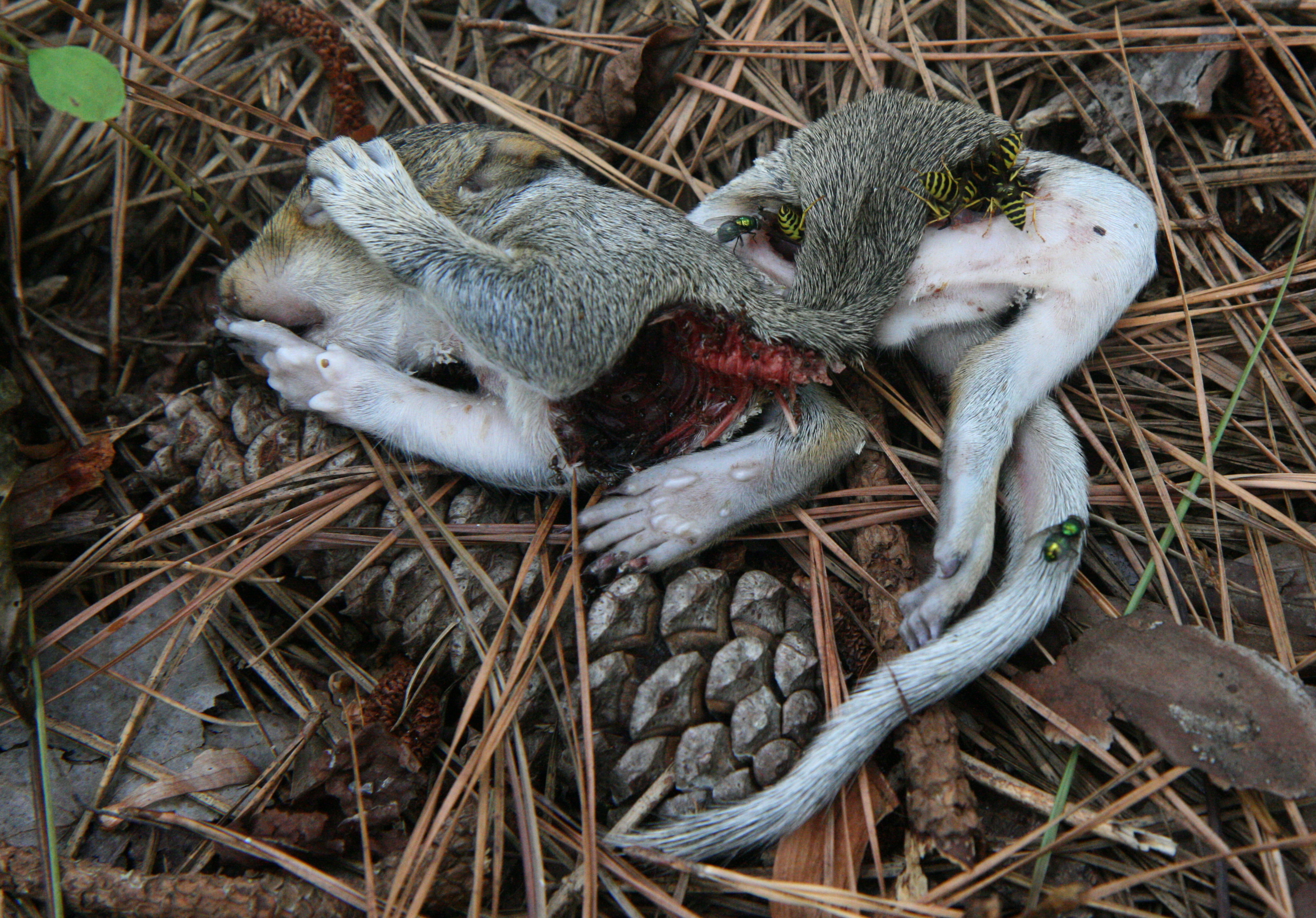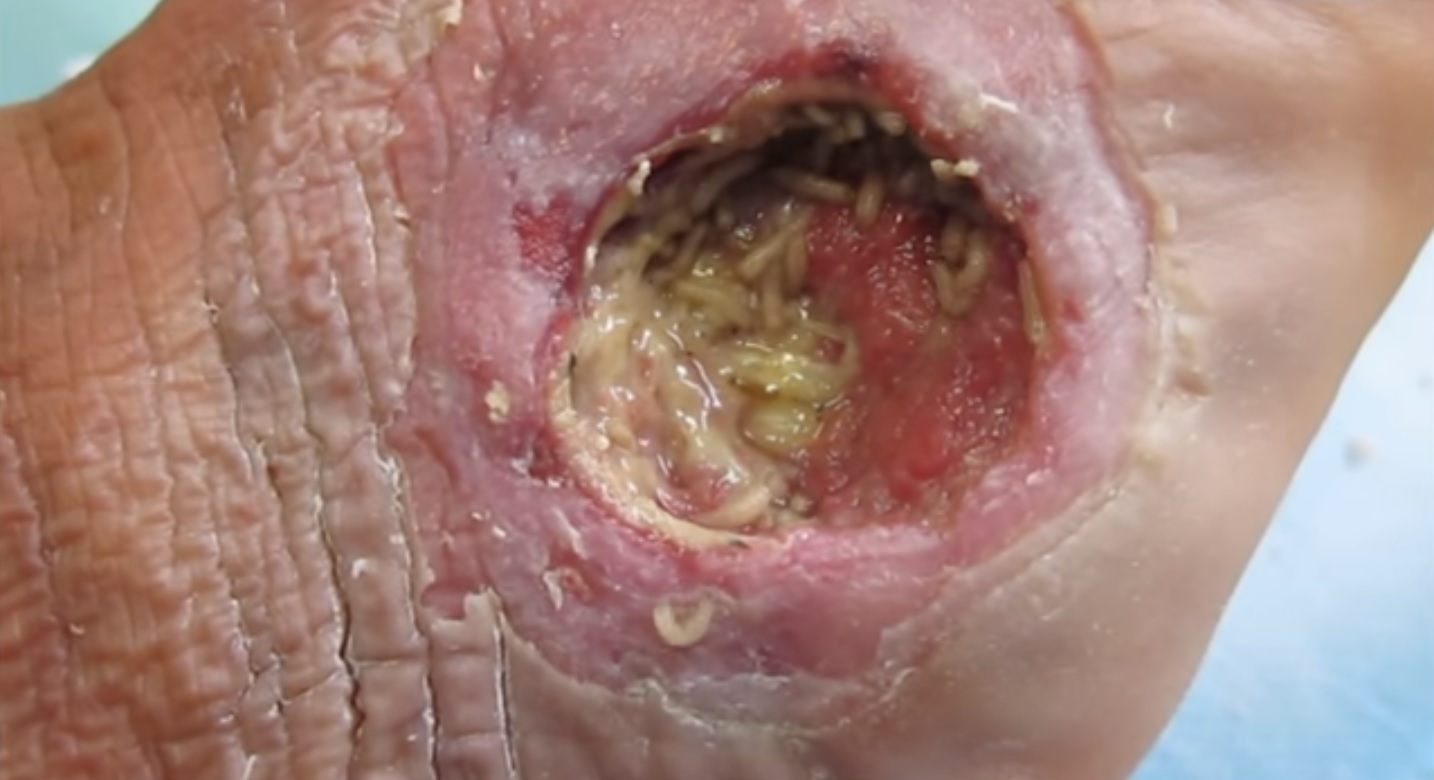|
Maggot
A maggot is the larva of a fly (order Diptera); it is applied in particular to the larvae of Brachycera flies, such as houseflies, cheese flies, and blowflies, rather than larvae of the Nematocera, such as mosquitoes and crane flies. Entomology "Maggot" is not a technical term and should not be taken as such; in many standard textbooks of entomology, it does not appear in the index at all. In many non-technical texts, the term is used for insect larvae in general. Other sources have coined their own definitions; for example: "The term applies to a grub when all trace of limbs has disappeared" and "Applied to the footless larvae of Diptera".Smith, John. BExplanation of terms used in entomology Brooklyn Entomological Society, 1906. Additionally, in ''Flies: The Natural History and Diversity of Diptera'', the author claims maggots "are larvae of higher Brachycera ( Cyclorrhapha)." Maggot-like fly larvae are of significance in ecology and medicine; among other roles, var ... [...More Info...] [...Related Items...] OR: [Wikipedia] [Google] [Baidu] |
Maggot Therapy
Maggot therapy (also known as larval therapy) is a type of biotherapy involving the introduction of live, disinfected maggots (fly larvae) into non-healing skin and soft-tissue wounds of a human or other animal for the purpose of cleaning out the necrotic (dead) tissue within a wound, (debridement) and disinfection. There is evidence that maggot therapy may help with wound healing. Medical uses Maggot therapy improves healing in chronic ulcers. In diabetic foot ulcers there is tentative evidence of benefit. A Cochrane review of methods for the debridement of venous leg ulcers found maggot therapy to be broadly as effective as most other methods, but the study also noted that the quality of data was poor. In 2004, the United States Food and Drug Administration (FDA) cleared maggots from common green bottle fly for use as a "medical device" in the US for the purpose of treatment of: * Non-healing necrotic skin and soft tissue wounds * Pressure ulcers * Venous stasis ulcers ... [...More Info...] [...Related Items...] OR: [Wikipedia] [Google] [Baidu] |
Myiasis
Myiasis is the parasitic infestation of the body of a live animal by fly larvae (maggots) which grow inside the host while feeding on its tissue. Although flies are most commonly attracted to open wounds and urine- or feces-soaked fur, some species (including the most common myiatic flies—the botfly, blowfly, and screwfly) can create an infestation even on unbroken skin and have been known to use moist soil and non-myiatic flies (such as the common housefly) as vector agents for their parasitic larvae. Because some animals (particularly non-native domestic animals) cannot react as effectively as humans to the causes and effects of myiasis, such infestations present a severe and continuing problem for livestock industries worldwide, causing severe economic losses where they are not mitigated by human action. Although typically a far greater issue for animals, myiasis is also a relatively frequent disease for humans in rural tropical regions where myiatic flies thrive, and ... [...More Info...] [...Related Items...] OR: [Wikipedia] [Google] [Baidu] |
Forensic Entomology
Forensic entomology is the scientific study of the colonization of a dead body by arthropods. This includes the study of insect types commonly associated with cadavers, their respective life cycles, their ecological presences in a given environment, as well as the changes in insect assemblage with the progression of decomposition. Insect succession patterns are identified based on the time a given species of insect spends in a given developmental stage, and how many generations have been produced since the insects introduction to a given food source. Insect development alongside environmental data such as temperature and vapor density, can be used to estimate the time since death, due to the fact that flying insects are attracted to a body immediately after death. The identification of postmortem interval to aid in death investigations is the primary scope of this scientific field. However, forensic entomology is not limited to homicides, it has also been used in cases of neglect ... [...More Info...] [...Related Items...] OR: [Wikipedia] [Google] [Baidu] |
Calliphoridae
The Calliphoridae (commonly known as blow flies, blow-flies, carrion flies, bluebottles, greenbottles, or cluster flies) are a family of insects in the order Diptera, with almost 1,900 known species. The maggot larvae, often used as fishing bait, are known as gentles. The family is known to be polyphyletic, but much remains disputed regarding proper treatment of the constituent taxa, some of which are occasionally accorded family status (e.g., Bengaliidae and Helicoboscidae). The name blowfly comes from an older English term for meat that had eggs laid on it, which was said to be flyblown. The first known association of the term "blow" with flies appears in the plays of William Shakespeare: ''Love's Labour's Lost'', '' The Tempest'', and ''Antony and Cleopatra''. Description Characteristics Calliphoridae adults are commonly shiny with metallic colouring, often with blue, green, or black thoraces and abdomens. Antennae are three-segmented and aristate. The aristae are plu ... [...More Info...] [...Related Items...] OR: [Wikipedia] [Google] [Baidu] |
Common Green Bottle Fly
The common green bottle fly (''Lucilia sericata'') is a blowfly found in most areas of the world and is the most well-known of the numerous green bottle fly species. Its body is in length – slightly larger than a house fly – and has brilliant, metallic, blue-green or golden coloration with black markings. It has short, sparse, black bristles (setae) and three cross-grooves on the thorax. The wings are clear with light brown veins, and the legs and antennae are black. The larvae of the fly may be used for maggot therapy, are commonly used in forensic entomology, and can be the cause of myiasis in livestock and pets. The common green bottle fly emerges in the spring for mating. Description The defining characteristic of ''L. sericata'' and the one most used when identifying the adult fly is the presence of three bristles on the dorsal mesothorax, located on the middle of the back of the fly. ''L. sericata'' is almost identical to its conspecific, '' L. cuprina,'' and ident ... [...More Info...] [...Related Items...] OR: [Wikipedia] [Google] [Baidu] |
Housefly
The housefly (''Musca domestica'') is a fly of the suborder Cyclorrhapha. It is believed to have evolved in the Cenozoic Era, possibly in the Middle East, and has spread all over the world as a commensal of humans. It is the most common fly species found in houses. Adults are gray to black, with four dark, longitudinal lines on the thorax, slightly hairy bodies, and a single pair of membranous wings. They have red eyes, set farther apart in the slightly larger female. The female housefly usually mates only once and stores the sperm for later use. She lays batches of about 100 eggs on decaying organic matter such as food waste, carrion, or feces. These soon hatch into legless white larvae, known as maggots. After two to five days of development, these metamorphose into reddish-brown pupae, about long. Adult flies normally live for two to four weeks, but can hibernate during the winter. The adults feed on a variety of liquid or semi-liquid substances, as well as sol ... [...More Info...] [...Related Items...] OR: [Wikipedia] [Google] [Baidu] |
Debridement
Debridement is the medical removal of dead, damaged, or infected tissue to improve the healing potential of the remaining healthy tissue. Removal may be surgical, mechanical, chemical, autolytic (self-digestion), and by maggot therapy. In podiatry, practitioners such as chiropodists, podiatrists and foot health practitioners remove conditions such as calluses and verrucas. Debridement is an important part of the healing process for burns and other serious wounds; it is also used for treating some kinds of snake and spider bites. Sometimes the boundaries of the problem tissue may not be clearly defined. For example, when excising a tumor, there may be micrometastases along the edges of the tumor that are too small to be detected, but if not removed, could cause a relapse. In such circumstances, a surgeon may opt to debride a portion of the surrounding healthy tissue to ensure that the tumor is completely removed. Types There is lack of high quality evidence to compare th ... [...More Info...] [...Related Items...] OR: [Wikipedia] [Google] [Baidu] |
Decomposing Possum
Decomposition or rot is the process by which dead organic substances are broken down into simpler organic or inorganic matter such as carbon dioxide, water, simple sugars and mineral salts. The process is a part of the nutrient cycle and is essential for recycling the finite matter that occupies physical space in the biosphere. Bodies of living organisms begin to decompose shortly after death. Animals, such as worms, also help decompose the organic materials. Organisms that do this are known as decomposers or detritivores. Although no two organisms decompose in the same way, they all undergo the same sequential stages of decomposition. The science which studies decomposition is generally referred to as ''taphonomy'' from the Greek language, Greek word ''taphos'', meaning tomb. Decomposition can also be a gradual process for organisms that have extended periods of dormancy. One can differentiate abiotic decomposition from biotic decomposition (biodegradation). The former means ... [...More Info...] [...Related Items...] OR: [Wikipedia] [Google] [Baidu] |
Piophilidae
The Piophilidae are a family of "true flies", in the order Diptera. The so-called cheese flies are the best-known members, but most species of the Piophilidae are scavengers in animal products, carrion, and fungi. They may accordingly be important in forensic entomology and medical entomology. For a fly maggot, the larvae of many species have an unusually well-developed ability to leap when alarmed or when abandoning their larval food to pupate; they accordingly may be known as cheese skippers or other kinds of skippers according to their food source. Overview The most notorious member of the family is the cheese fly, ''Piophila casei''; it is cosmopolitan, and a typical member of the family. It is a small species, about long. The fly's larvae infest cured meats, smoked or salted fish, cheeses, and carrion. The mature larva is about long and is sometimes called the cheese skipper because of its leaping ability - when disturbed, this tiny maggot can hop some 15 cm (6& ... [...More Info...] [...Related Items...] OR: [Wikipedia] [Google] [Baidu] |
Decomposition00
Decomposition or rot is the process by which dead organic substances are broken down into simpler organic or inorganic matter such as carbon dioxide, water, simple sugars and mineral salts. The process is a part of the nutrient cycle and is essential for recycling the finite matter that occupies physical space in the biosphere. Bodies of living organisms begin to decompose shortly after death. Animals, such as worms, also help decompose the organic materials. Organisms that do this are known as decomposers or detritivores. Although no two organisms decompose in the same way, they all undergo the same sequential stages of decomposition. The science which studies decomposition is generally referred to as ''taphonomy'' from the Greek word ''taphos'', meaning tomb. Decomposition can also be a gradual process for organisms that have extended periods of dormancy. One can differentiate abiotic decomposition from biotic decomposition (biodegradation). The former means "the degradation ... [...More Info...] [...Related Items...] OR: [Wikipedia] [Google] [Baidu] |
Larvae
A larva (; plural larvae ) is a distinct juvenile form many animals undergo before metamorphosis into adults. Animals with indirect development such as insects, amphibians, or cnidarians typically have a larval phase of their life cycle. The larva's appearance is generally very different from the adult form (''e.g.'' caterpillars and butterflies) including different unique structures and organs that do not occur in the adult form. Their diet may also be considerably different. Larvae are frequently adapted to different environments than adults. For example, some larvae such as tadpoles live almost exclusively in aquatic environments, but can live outside water as adult frogs. By living in a distinct environment, larvae may be given shelter from predators and reduce competition for resources with the adult population. Animals in the larval stage will consume food to fuel their transition into the adult form. In some organisms like polychaetes and barnacles, adults are ... [...More Info...] [...Related Items...] OR: [Wikipedia] [Google] [Baidu] |
Carrion
Carrion () is the decaying flesh of dead animals, including human flesh. Overview Carrion is an important food source for large carnivores and omnivores in most ecosystems. Examples of carrion-eaters (or scavengers) include crows, vultures, condors, hawks, eagles, hyenas, Virginia opossum, Tasmanian devils, coyotes and Komodo dragons. Many invertebrates, such as the carrion and burying beetles, as well as maggots of calliphorid flies (such as one of the most important species in ''Calliphora vomitoria'') and flesh-flies, also eat carrion, playing an important role in recycling nitrogen and carbon in animal remains. Carrion begins to decay at the moment of the animal's death, and it will increasingly attract insects and breed bacteria. Not long after the animal has died, its body will begin to exude a foul odor caused by the presence of bacteria and the emission of cadaverine and putrescine. Some plants and fungi smell like decomposing carrion and attract insects ... [...More Info...] [...Related Items...] OR: [Wikipedia] [Google] [Baidu] |






.jpg)




